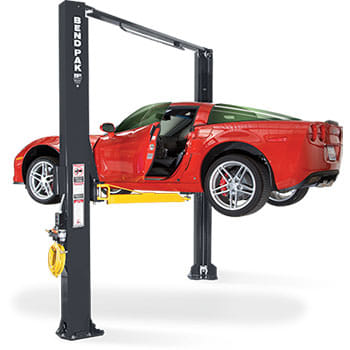Coverage for Welding Harzards in welding is an indispensable process across various industries, playing a crucial role in constructing buildings, manufacturing machinery, and fabricating structures. However, along with its utility comes a range of hazards that can pose risks to the health and safety of workers, bystanders, and even the environment. Effective coverage for welding hazards is essential to mitigate these risks and ensure a safe working environment. This article aims to delve into the comprehensive coverage of welding hazards, including their understanding, mitigation strategies, regulatory frameworks, and best practices.
Understanding Welding Hazards
Welding involves the joining of metals through the application of heat, pressure, or a combination of both. While it is a fundamental process, it exposes workers to various hazards, including:
- Fume and Gas Exposure: Welding produces fumes and gases that contain harmful substances such as metal oxides, ozone, nitrogen oxides, and carbon monoxide. Prolonged exposure to these substances can lead to respiratory issues, neurological problems, and other serious health conditions.
- Arc Radiation: The intense heat generated during welding produces ultraviolet (UV) radiation, visible light, and infrared radiation. Exposure to arc radiation can cause skin burns, eye damage (arc eye or welder’s flash), and in extreme cases, thermal injuries.
- Electric Shock: Welding equipment operates at high voltages, posing a risk of electric shock to welders. Improper handling of electrical components or damaged equipment can increase the likelihood of accidents.
- Fire and Explosion: The use of flammable gases and combustible materials in welding processes increases the risk of fire and explosion. Poor ventilation, inadequate safety measures, and ignition sources can contribute to these hazards.
- Noise: Welding operations produce significant levels of noise, which can exceed recommended exposure limits and cause hearing loss over time.
Understanding these hazards is crucial for developing effective mitigation strategies and ensuring the safety of personnel involved in welding activities.
Mitigation Strategies on Coverage for Welding Harzards
To mitigate welding hazards effectively, organizations must implement a combination of engineering controls, administrative measures, and personal protective equipment (PPE). Some key strategies include:
- Ventilation Systems: Installing local exhaust ventilation (LEV) systems to capture and remove welding fumes and gases at the source. These systems help prevent the accumulation of hazardous airborne contaminants in the work environment.
- Substitution of Materials: Where feasible, substituting hazardous materials with safer alternatives can reduce exposure risks. For example, using low-fume or no-fume welding processes and selecting metals with lower toxicity levels.
- Automation and Robotics: Implementing automated welding processes reduces the need for manual intervention, thereby minimizing worker exposure to hazards such as arc radiation, fumes, and noise.
- Training and Education: Providing comprehensive training programs to workers on safe welding practices, hazard awareness, and proper use of PPE. Education plays a crucial role in promoting a safety culture within the organization.
- Regular Maintenance and Inspection: Conducting routine maintenance checks on welding equipment to ensure proper functioning and identifying potential hazards. Prompt repair of faulty equipment reduces the risk of accidents.
- Personal Protective Equipment (PPE): Supplying appropriate PPE such as welding helmets with auto-darkening filters, protective clothing, gloves, and respiratory protection to shield workers from exposure to hazards.
Implementing these mitigation strategies requires collaboration between employers, safety professionals, and workers to create a safe and healthy work environment.
Regulatory Frameworks and Standards on Coverage for Welding Harzards
Governments and regulatory bodies worldwide have established standards and regulations to address welding hazards and ensure workplace safety. Some key regulatory frameworks include:
- Occupational Safety and Health Administration (OSHA): In the United States, OSHA sets and enforces standards for occupational safety and health, including those related to welding and cutting processes (29 CFR 1910.252).
- European Union Directives: The EU has directives such as the Machinery Directive (2006/42/EC) and the Workplace Directive (89/391/EEC) that mandate employers to assess and mitigate risks associated with welding activities.
- International Standards: Organizations such as the International Organization for Standardization (ISO) develop standards like ISO 3834 (Quality requirements for fusion welding of metallic materials) and ISO 14731 (Welding coordination) to ensure the quality and safety of welding processes.
- National Fire Protection Association (NFPA): NFPA standards, such as NFPA 51B (Standard for Fire Prevention During Welding, Cutting, and Other Hot Work) provide guidelines for fire prevention during welding operations.
Adhering to these regulatory frameworks helps organizations comply with legal requirements and protect workers from welding-related hazards.
Best Practices for Welding Safety in Coverage for Welding Harzards
In addition to regulatory compliance, implementing best practices enhances welding safety and minimizes risks. Some best practices include:
- Pre-Work Assessments: Conducting pre-work assessments to identify potential hazards, plan safety measures, and communicate risks to workers before starting welding activities.
- Work Area Preparation: Ensuring proper ventilation, adequate lighting, and clear access routes in the work area to facilitate safe welding operations.
- Fire Prevention Measures: Implementing fire prevention measures such as removing combustible materials, keeping fire extinguishers nearby, and establishing hot work permits for welding in hazardous environments.
- Emergency Response Planning: Developing emergency response plans to address accidents, injuries, fires, or other unforeseen incidents during welding operations.
- Continuous Monitoring and Improvement: Regularly reviewing safety procedures, conducting risk assessments, and soliciting feedback from workers to identify areas for improvement and enhance safety protocols.
By integrating these best practices into their operations, organizations can create a culture of safety and mitigate welding hazards effectively.
Conclusion on Coverage for Welding Harzards
Coverage for welding hazards is essential for safeguarding the health and well-being of workers and ensuring the integrity of welding operations. By understanding the various hazards associated with welding, implementing appropriate mitigation strategies, complying with regulatory frameworks, and adopting best practices, organizations can create safer work environments and reduce the incidence of welding-related accidents and injuries. Investing in comprehensive coverage for welding hazards not only protects personnel but also contributes to productivity, efficiency, and overall business success in the long run







